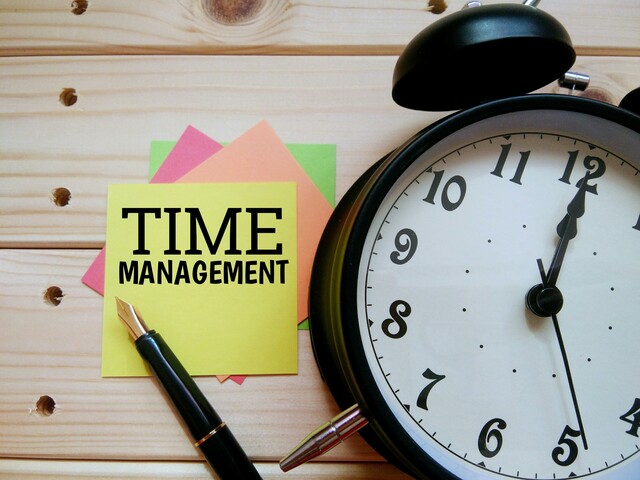Commercial enterprises exist to make money. When money changes hands, there is typically a record of it; and that record forms the foundation of an important facet of business management: the discipline of accounting. Accounting is defined as the recording, reporting, and analysis of the financial transactions of businesses, individuals, or other entities. In the U.S., business managers typically follow generally accepted accounting principles (GAAP) that establish standards for documenting and reporting financial data. The current principles have been developed by the Financial Accounting Standards Board (FASB), a private, nonprofit organization created in 1973. The group guides the practices of private-sector, public, and private companies, both for-profit and nonprofit types. Though not a governmental organization, the FASB is designated by the Securities and Exchange Commission (SEC) to set the standards for all publicly traded enterprises. For international companies, the principles and standards followed are issued in the International Financial Reporting Standards (IFRS).
Financial statements are the records used for collecting, presenting, and reporting data about a company's transactions for a period of time. Accounting managers will regularly analyze these documents rather than the daily records used for each transaction. Companies that are listed on stock exchanges regulated by the SEC must use these documents when reporting their financial condition. There are four primary documents used:
-
Balance sheet: This record reports assets and liabilities that indicate the resources a company owns and how much debt is owed. The difference between the two is recorded as ownership's equity. The principle that is followed requires that assets equal liabilities plus ownership equity. The balance sheet is typically issued annually and is considered a "snapshot" of the company's current financial condition. This is the only report that applies to a single point in time.
-
Income statement: Also known as a profit and loss statement, the income statement presents the results of a company's functioning over a period of time, usually annually or quarterly. It begins with gross revenues or sales and deducts the cost of goods sold, which include labor and material costs. From that figure, expenses reduce the revenues to net income. Income can come from both operational and non-operational activities, and expenses include taxes, marketing activities, financing costs, etc.
-
Cash flow statement: Accountants maintain this record to show the receipt and payment, or sources and uses, of funds over a defined period, often monthly or quarterly. It presents data from operations, investment, and financing activities. This report is especially important to lenders maintaining financial responsibility.
-
Statement of retained earnings: Most often reported with the balance sheet and income statement, this record shows a business's ability to hold onto, or retain, a portion of its income over an accounting period, usually one year. This document is typically generated when the company is owned by multiple parties, such as stockholders. Investors are interested in this report, which records a beginning balance, adds income, subtracts dividends paid to stockholders, and indicates a final balance for the period.
Accounting requires attention to detail and accurate data entry. As the essential guide to a company's economic condition, management places a great deal of responsibility in this area. The accounting manager can be responsible for a number of financially related activities. Smaller companies may have one person perform all the functions, but larger companies have departments employing at least a few workers. Essentially, the responsibilities can include journal and ledger entries, bank reconciliation (verifying banking activities), performing accounts payable and accounts receivable functions, preparing payroll and tax documents, presenting the financial statements and reporting activities to upper management, and performing audits on financial data.
Inventory Control Process
The process, which starts with estimating inventory levels, can follow unfinished goods all the way through manufacture and delivery to the end user. The manager oversees the material or supply order placement, delivery schedules, and product handling when the goods arrive. Many use a system called material requirement planning (MRP) to coordinate forecasting, ordering, delivery, and storage functions.
Purchasing inventory, sometimes called procurement, involves a purchasing agent researching and negotiating with vendors who can supply the raw materials, parts, or finished goods a company sells to its customers. Then the inventory manager must control the process of storing and then transferring the goods to the customer. If the company manufactures finished products from parts or raw materials, the manager may be required to maintain a balance between supplies and finished goods. Some businesses produce goods using just-in-time manufacturing, where assembly parts or materials are delivered only when they are immediately needed. This avoids carrying costs and can improve the company's bottom line.
When the order is delivered, the manager reconciles the order by making sure the delivery matches the order placed. At times, the physical condition when delivered can affect the final order, as the purchasing agent can refuse delivery of unacceptable goods. Because delivery times may vary from order to order, managers must account for some flexibility when placing an order for goods. Conversely, he or she must also ensure that the company's output meets customer demand. Inventory levels can fluctuate based on buyer behavior and other factors. Seasonal inventory shifts occur when demand spikes or drastically drops off.
Forecasting and maintaining adequate product levels affect not only the company's performance but its bottom line. With customers demanding availability sometimes faster than a business can produce products, it is essential that managers have adequate stockpiles available at all times. Carrying inventory brings risks from either being under-stocked or overstocked. As mentioned earlier, having shortages has detrimental effects on production or the ability to stock store shelves. If inventory runs out, items must be placed on a backorder status, possibly delaying or cancelling customer orders. But it also could force the company to purchase goods at a higher price in order to replenish supplies. The manager may also have to look at another supplier, which might require different payment terms and delivery expectations. Overstocking carries obligations such as carrying costs. These can include additional handling costs, higher storage costs, risks for obsolescence (out of date or no longer desired), pilferage (stealing), or deterioration (quality loss). Many systems build in safety stock levels that alert inventory managers that stock is running low.
The purchase process of sales stock, materials, and supplies is also important. Not only must inventory acquisition be timely, but purchases must make economic sense for the company. Because businesses operate on margins, particularly profit margins, the inventory manager must seek suppliers who can provide the most economical option and place orders at times that provide the highest return on investment. In the retail industry, for example, inventory management often tracks perpetual inventory in which the value of products is continually analyzed. Values may fluctuate depending on when inventory is received. Inventory turnover is usually calculated using the cost of acquiring the goods, so order placement will affect the value of inventory held. Order frequency and timing can benefit the company if suppliers offer discounts for bulk orders or time-sensitive promotions.
While some operations, primarily online retail businesses, move goods directly from distributor to customer, many product-based businesses must store inventory. Storage challenges include monitoring warehouse conditions, stacking procedures, and movement and rotation processes. For perishable or dated items, rotation of products must be done to ensure appropriate flow of the freshest goods to customers. For non-perishables, rotation ensures that the items are moved out following a cost structure that establishes a margin between product cost and customer price. How companies account for inventory values is based on how inventory is rotated during storage. The two primary rotation schedules used by most inventory managers are last in, first out (LIFO), in which products most recently received are moved to customers first, and first in, first out (FIFO), in which the longest-held goods are moved out first. For example, food products are typically rotated on a FIFO basis so that the oldest goods are sent out before recently delivered items.
Another important function of inventory management is to reconcile shipments received with the orders placed, and what is recorded in the manager's MRP system. This function is done manually by performing a cycle count of available inventory. The count is then compared to inventory levels recorded in the management model. Problems can occur because of miscounting receipts or items on hand, data entry errors, or failing to record transactions.
Inventory management can also involve monitoring and coordinating distribution functions. Larger businesses typically have fulfillment departments to perform these activities. However, small companies often manage distribution activities through inventory managers. Also, when manufactured items are produced using a supply chain of vendors to obtain parts or materials for assembly, the tracking and accessibility of unfinished goods is another responsibility. A manager's control system must be able to determine where a good is in the chain, how many are available, and when it can be delivered. The same function is required for the finished goods in a warehouse, so customer orders can be filled from the correct location.
Cost management is vital to company profitability, so inventory valuation control is yet another important function of the inventory manager. Working with accounting personnel, the manager will determine the value of goods the company holds. By using LIFO, FIFO, or weighted average formulas, the financial "weight" of the stock can be measured. In this activity, LIFO means that the cost of goods held is valued according to the most recent additions to inventory. For example, if a bakery makes two dozen cakes on Monday for 95 cents each, on Wednesday for $1.25 each, and on Friday for $1 each, and there are 10 cakes left over on Saturday, those remaining cakes will amount to $10 in cost valuation. Accordingly, FIFO determines a value based on the cost of producing or acquiring the oldest items in stock. The earlier example would result in a value of $9.50. This is why the timing of inventory purchases is important: Timing can affect valuations.
Today's inventory control manager works with computer-run models, such as MRP, that integrate with other systems used to manage operations. Some key functions include:
� product catalog listing all inventoried items;
� pricing models detailing acquisition, carrying, labor, storage costs, etc.;
� scheduling that determines delivery dates and forecasts demand and supply levels;
� usage history displaying demand patterns and production history;
� shop floor controls that track materials and labor throughout the production process;
� purchasing that produces purchase orders for inventory items and company supplies;
� inventory controls that show where items are located and how many are in stock.






























